by Dr. Talia Marcheggiani, ND | Oct 27, 2013 | Art, Art Therapy, Meditation, Philosophy, Poetry, Writing
Medicine is an art form; each chart is a blank canvas on which we document the interconnection between ourselves and our patient. Through medicine we allow patients to publish their own autobiographies, as we ghost-write it, pen to paper, in our medical charts.
(more…)

by Dr. Talia Marcheggiani, ND | Jun 24, 2013 | Happiness, Meditation, Mental Health, Mindfulness, Philosophy, Psychology, Self-reflection, Writing

I recently came across this Ted Talk, by Shawn Anchor, recommended by a fellow student. The insightful, well-delivered, entertaining talk is important in the field of naturopathic medicine because it stresses the importance of positivity for living a life of health and happiness.
[youtube=http://www.youtube.com/watch?v=GXy__kBVq1M]
Shawn expresses the idea that only 10% of our inner happiness is due to external factors: our job, possessions, education, etc, while the other 90% is attributed to how we perceive those circumstances. We live in a society where we focus on reaching goals, thinking that once we reach those goals we will be happier: “When I lose 20 pounds, I’ll feel happy with myself,” “When I get that raise, I’ll like my job,” or “If I get into that school, then I’ll feel great.” It reminded me of a story our Mindfulness Based Stress Reduction teacher told us on Tuesday night:
There was once a fisherman, sleeping in his boat. He had caught all his fish for the day and so he was enjoying the sunny afternoon by taking a well-deserved nap, when along came a businessman.
“What are you doing?” Asked the businessman.
“I’m resting.” Replied the fisherman, “I’ve caught all my fish for the day.”
“Why don’t you go out and catch more?” Asked the businessman.
“Why would I do that?” Wondered the fisherman.
“Well, if you went out and caught more fish, you’d make more money.” Stated the businessman, as if it were the most obvious thing in the world.
“What would I do with more money?” Inquired the fisherman.
“You could buy a bigger boat.”
“And what would I do with a bigger boat?”
“Well,” replied the businessman, “You could catch even more fish, then. Then you could make even more money, buy a fleet of boats, employ other fishermen, catch even more fish and make even more money.” He finished, seeming pleased with his insightful advice.
“And what would I do then?” Asked the fisherman, who by now was very confused.
“Well,” exhaled the businessman, on a role now, “then you could really enjoy life!”
The fisherman looked at his beautiful surroundings, the afternoon sun dancing on the calm waters of the harbour; his humble but comfortable boat serving as the perfect place to rest. He looked back up at the businessman, who by now was looking quite triumphant, and replied,
“And what the heck do you think I’m already doing?”
Like the fisherman, being content with your life’s present circumstances is the key to increased enjoyment and satisfaction. According to Shawn Anchor, becoming more positive isn’t hard: he proposes a way to increase your satisfaction and overall happiness by spending only 2 minutes a day for 21 days in a row.
He suggests a list of activities that one might engage in, including exercise, meditation or journalling. One of the activities that stood out for me is expressing daily gratitude by taking 2 minutes at the end of each day to journal 3 things you have been thankful for in the past 24 hours. According to Shawn, this simple task is enough to set the brain on a different path, one that leads to increased happiness.
I often find that, in my life, I spend my time focusing on my goals and aspirations for the future. While this striving for future goals is what I’ve been taught to do in order to experience successes in my life, it results in my inability to pay attention to and enjoy my life in the present. Changing my lens of focus to the life blessings I have now allows me to marinate in the present. I find that, while it may takes some time to shift my gaze to the things I already have, rather than the things I’d like to have, once I got started, it was hard to stop at just listing three things. I felt like I wasn’t doing my life justice by excluding the numerous gifts I’m given on a daily basis.
I also like the idea of putting these pieces of gratitude on small pieces of paper and storing them in a glass jar in a visible place. At the end of the month, or during a bad day, I open my jar and pull out a few pieces of gratitude, reminding myself how charmed my life actually is, and thus rewiring my brain to truly appreciate and enjoy it.
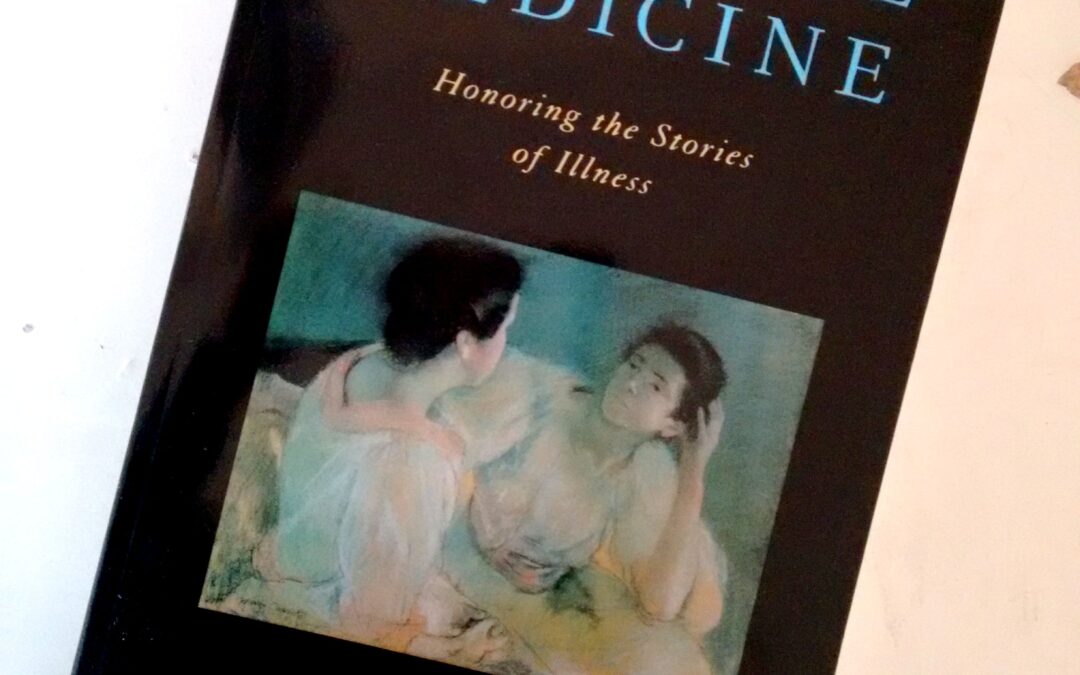
by Dr. Talia Marcheggiani, ND | Apr 8, 2013 | Art, Art Therapy, Book Review, Canadian College of Naturopathic Medicine, Creativity, Empathy, Healing Stories, Listening, Naturopathic Philosophy, Naturopathic Principles, Philosophy, Psychology, Student, Writing
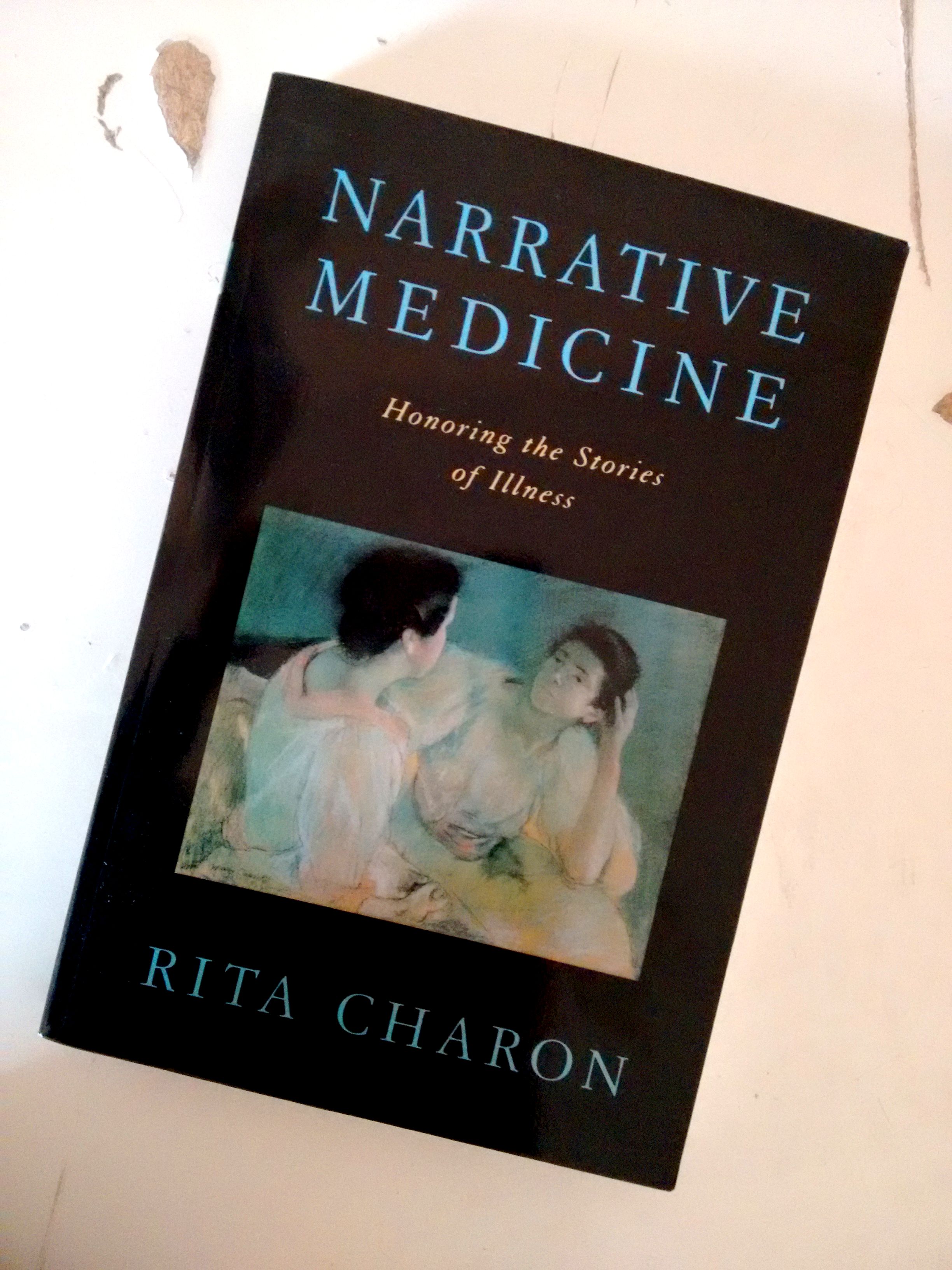 A classmate recently lent me a book that introduced me to the intriguing field of “narrative medicine.” The book is called Narrative Medicine: Honoring the Stories of Illness, written by Rita Charon, MD, an internist practicing in New York City. Narrative medicine combines the practice of medicine with simultaneously learning to recognize, absorb, interpret, and be moved by the stories of illness.
A classmate recently lent me a book that introduced me to the intriguing field of “narrative medicine.” The book is called Narrative Medicine: Honoring the Stories of Illness, written by Rita Charon, MD, an internist practicing in New York City. Narrative medicine combines the practice of medicine with simultaneously learning to recognize, absorb, interpret, and be moved by the stories of illness.
According to the book, the practice of narrative medicine builds empathy and compassion for patients by giving meaning to their experience through stories. It allows doctors to bear witness to the patients and their suffering and to enable those who are suffering to be heard, thus making their care more effective and, by virtue of the doctor’s presence and ability to testify to the patient’s pain, the pain is lessened somewhat.
The Need for Narrative in Modern and Natural Medicine
Rita writes, “the medical impulse toward replicability and universality has muted doctors’ realization of the singularity and creativity of their acts of observation and description.” In medical school we come to learn that, when asked to choose between a) b) c) d) or e), all of the above, there can only be one right answer. Through these educative measures, we are led to believe that there is no room for creativity or individuality in medicine. Narrative medicine, however, begins to challenge that belief. According to Dr. Charon, there is a struggle in medicine to balance the need to properly observe the phenomenon of the individual patient and his or her particular clinical presentation before us, with the need to fit people into diagnostic categories. Oftentimes, the scale tips to the latter, simply by nature of patient volume or ease of the encounter. When we fit people into categories we can ease the anxiety that comes with uncertainty. We are soothed by the security of being right, the same way we are soothed by correctly choosing c) on a multiple choice exam. Patients, however, have come to resent this aspect of modern medicine. Rita writes, “patients complain that doctors or hospitals treat them like numbers or like items on an assembly line. They lament that their singularity is not valued and that they have been reduced to that level at which they repeat other human bodies.” In Rita Charon’s eyes, however, we are beginning to see a new emergence of both doctors and patients taking back the right to patient individuality in medical care. We naturopathic doctors hear this often, when asking why a patient decided to come to see us in lieu of a medical doctor, and hearing that they were driven by the need to be treated “like a person”, not just a disease.
Our bodies and our health are integral parts of the narratives of our lives. And so a personal medical history that, in the case of a medical school exam, takes about 8-10 minutes to complete, actually carries in it the patient’s life story. Everything that the body have been through the self has also been through and whatever has happened to the body remains ingrained in the self and forms a part of the patient’s narrative. Kathryn Montgomery, a colleague of Rita Charon’s once said, “you can accomplish an entire medical interview by simply asking a patient, “tell me about your scars.'”
Dr. Rita Charon writes, “without doubt, the teller and the listener in the clinical setting work together to discover or create the plot of their concerns. The better equipped clinicians are to listen for or read for a plot, the more accurately will they entertain likely diagnoses and be alert for unlikely but possible ones. To have developed methods of searching for plot or even imagining what the plot might be equips clinicians to wait, patiently, for a diagnosis to declare itself, confident that eventually the fog will rise and the contours of meaning will become clear.” Narrative, we learn, is essential for understanding illness.
Receiving a Patient History
Sir Richard Bayliss, another colleague of Charon’s, writes, “not only must the physician hear what is said but with a trained ear he or she must listen to the exact words that the patient uses and the sequence in which they are uttered. Histories must be received, not taken.”
Rita Charon’s current method of “receiving” a patient history is described eloquently in her book. It differs so much from the style we are taught in medical school, that I feel it is worth sharing. She writes that, when she first meets a patient, she begins by saying, “tell me what you think I should know about your situation.” She then makes the commitment to listen, without speaking or writing anything down. In medical school we are taught to organize a chart by history of presenting illness, past medical history, family history, etc. However, Charon realized that, by allowing the patient to direct his or her own clinical interview, the information all comes out eventually. She believes it is crucial to allow the patients to narrate their own history, allowing the information to take its own order, to formulate itself into not just a coherent plot but also a literary form, so that the entire story becomes apparent, and free from her own bias and internal or external editing. While the patient tells his or her story, Dr. Charon listens as intently as she can, registering diction, form, images and the pace of speech emitted from the patient’s mouth. She tries not to interrupt or confer signs of encouragement, pleasure or disapproval. She refrains from asking questions. And, she takes the time to absorb the metaphors, idioms, accompanying gestures, plot and characters involved in the patient’s narrative.
Once her patient has finished with his or her telling, Dr. Charon proceeds to the physical exam portion of the clinical visit. She tries to capture what has been said by writing the story down in her chart while the patient changes into his or her gown and readies for the physical examination.
Dr. Charon writes that it has taken her a while to perfect this form of receiving a patient history. As unorthodox as it may seem, she writes that she has come to thoroughly enjoy the individuality and humanity of the stories that come from each person, each one so different from any other and each belonging to a singular person and body. It has helped her understand her patients, maintain empathy for them and provide them with what she believes is more effective care.
The Parallel Chart
Rita Charon believes that, not only is the use of narrative helpful for the doctor-patient relationship, it can be used to help physicians and other healthcare practitioners digest their experience as well. In one of her years as a clinical supervisor, she developed a practice called the Parallel Chart. As medical students and doctors, we are required to write our patient’s stories in the form of medical charts, following a specific format, creating what can be viewed as an entire literary genre used solely among medical professionals. Medical students and doctors alike are expected to learn to write and maintain a coherent medical chart, according to the standards of this genre.
However, as a clinical supervisor, Rita Charon also has her young precepts write a Parallel Chart, one that will not be filed for reference but that is just for the benefit of the practitioner, written in plain language, about one of his or her patients. She tells her students, “every day you write in the hospital chart about each of your patients. You know exactly what to write there and the form in which to write it. You write about your patient’s current complaints, the results of the physical exam, laboratory findings, opinions of consultants, and the plan. If your patient dying of prostate cancer reminds you of your grandfather, who died of that disease last summer, and each time you go into the patient’s room, you weep for your grandfather, you cannot write that in the hospital chart. We will not let you. And yet it has to be written somewhere. You write it in the Parallel Chart.”
After giving her students these instructions, Rita Charon meets with them in a group once a month and gives everyone the chance to read a Parallel Chart entry of their choice out loud. After the reading, she proceeds to comment on the genre, temporality, metaphors, structure and style of the text that has been written, using her literary background as a guide. The other students then have a chance to respond to the text, creating a dialogue surrounding their clinical experiences.
She reflects that her students in the past have written about their deep attachment to patients, their feelings of helplessness in the clinical encounter in their role as mere medical students, the rage, shame and humiliation they experience in the face of disease as well as their awe at patients’ courage. Dr. Rita Charon claims that the students who undertake the task of keeping a Parallel Chart have found that they are more in touch with their own emotions during the clinical encounter, feel deeper empathy for their patients and fellow colleagues and are able to understand their patients more fully. Research is even being conducted at Columbia University to evaluate the effectiveness of Parallel Charting, finding that physicians who engage in this practice are more proficient and effective at conducting medical interviews, performing medical procedures and developing doctor-patient relationships with patients.
In many ways, naturopathic medicine already acknowledges the importance of patient story-telling when it comes to healing from disease. We treat people as individuals and look for the root cause of illness, taking into account the story behind each of our patient’s “scars”. However, as our school curriculum becomes more medicalized and primary care-focused, I believe that our need to conduct efficient medical interviews and develop effective treatment plans is in danger of displacing our inherent philosophies. Taking the time to read Rita Charon’s book opened my eyes to the importance of patient individuality and respect for patient narrative. To understand illness, it is essential to integrate narrative into the framework of the clinical encounter by giving patients the space to tell, while also giving ourselves, the practitioners, the space for our own telling with the intention of becoming better, more empathetic doctors.
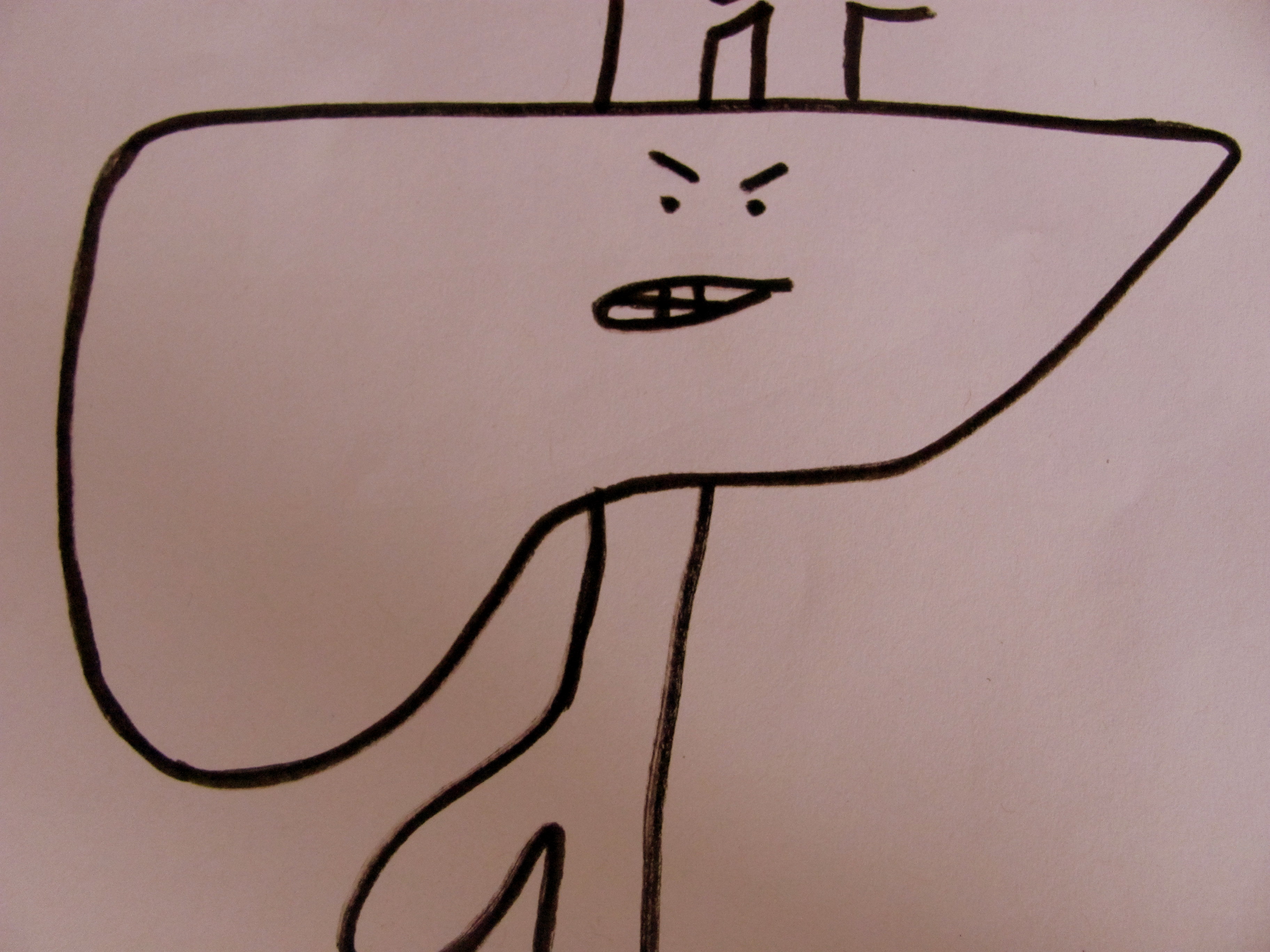
by Dr. Talia Marcheggiani, ND | Apr 4, 2013 | Canadian College of Naturopathic Medicine, Health, Philosophy, Student, Writing

This piece of writing was meant for The Body Parts Anthology, a compilation of naturopathic student writings, bringing the “art” into the art and practice of naturopathic medicine. It would be a way to creatively reflect on our experiences of learning about and living with a specific body part and of belonging to a body. All of us have parts that keep us alive without our input, as if they had their own minds (they actually do!). And yet, we are responsible for the well-being of the machine we’ve inherited, grown inside, expanded into the world with. Sadly, The Body Parts Anthology never came to be (due to the endless onslaught of exams and assignments, we’re besieged with weekly) so I’ve decided to share mine here. Might as well.
(more…)

by Dr. Talia Marcheggiani, ND | Jan 7, 2013 | Community, Health, Holidays, Writing, Year in Review

Happy New Year, everyone! I took a much needed computer fast for a few days and thus left this blog for a little while, but I’m back now. The world didn’t end in 2012, and it was an interesting, productive year. Here are some highlights!
(more…)

by Dr. Talia Marcheggiani, ND | Dec 12, 2012 | Animals, Balance, Health, Mindfulness, Nature, Nature Cure, Naturopathic Philosophy, Nutrition, Outdoors, Parks, Pets, Philosophy, Writing

I realized it one day, while spending a particularly delicious Saturday in one of the armchairs of the living room, feeling the sun warm my back as it streamed through the shutters: for the first time in a while, I didn’t feel stressed. Coco was draped across my back, lying on the back of the chair. As if on cue, he let out a long puff of a sigh, his eyes closed. Coco is never stressed, I thought to myself. And then I realized it: Coco is more naturopathic than any doctor could hope to be. As Dr. Stargrove said, at The Gathering in Chicago, “nature knows more than doctors ever will.” And Coco, with is furry body and leathery paws is much closer to nature than any of us will ever be.
(more…)

by Dr. Talia Marcheggiani, ND | Oct 27, 2012 | Blog Awards, Canadian College of Naturopathic Medicine, Health, Student, Sunshine Blog Award, Writing
 I want to thank Leanne at Eat and Get Moving for my 3rd blog award: The Sunshine Award. Receiving this award today is fitting considering the fact that it’s currently pouring rain outside. It’s an honour to receive recognition from the blogging community, knowing that other people are reading and appreciating your work. So, thanks, Leanne! I highly recommend visiting her blog, which is another good source of sunshine!
I want to thank Leanne at Eat and Get Moving for my 3rd blog award: The Sunshine Award. Receiving this award today is fitting considering the fact that it’s currently pouring rain outside. It’s an honour to receive recognition from the blogging community, knowing that other people are reading and appreciating your work. So, thanks, Leanne! I highly recommend visiting her blog, which is another good source of sunshine!
(more…)
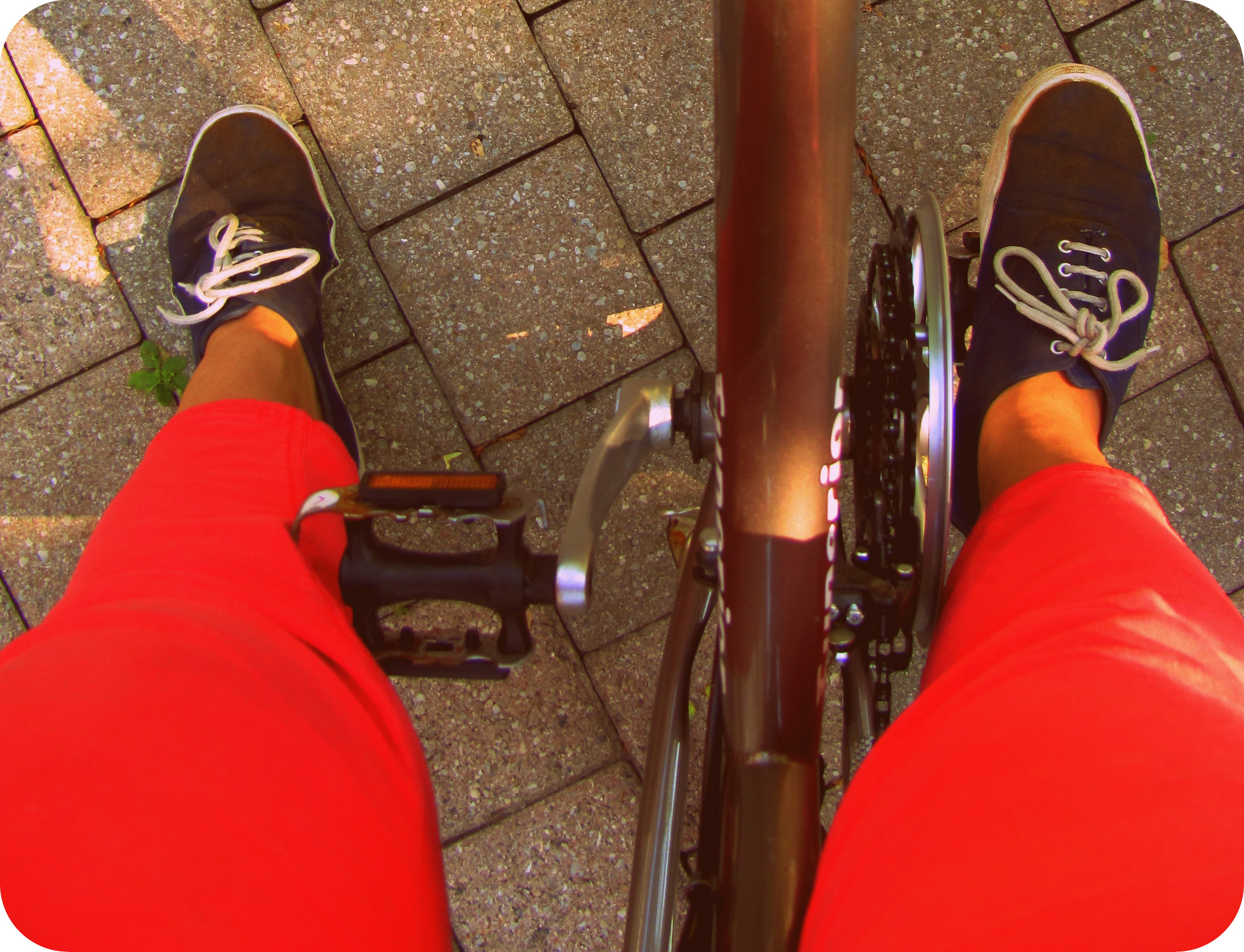
by Dr. Talia Marcheggiani, ND | Sep 6, 2012 | Exercise, Fitness, Health, Lifestyle, Outdoors, Parks, Photography, Summer, Writing

Back in May, when the four glorious months of summer lay before me like a vast, expansive ocean, I had the luxury of fantasy. I imaged myself, summer skirts flowing and carrying a basket full of flowers, gliding over pavement on my bicycle.
(more…)
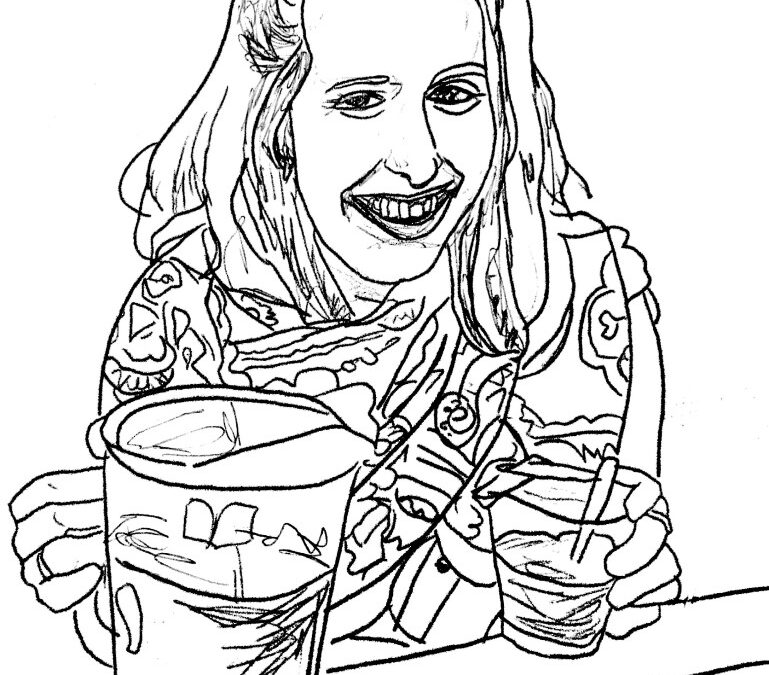
by Dr. Talia Marcheggiani, ND | Aug 13, 2012 | Art, Art Therapy, Beauty, Body Image, Colour, Creativity, Culture, Finding yourself, Mental Health, Mindfulness, NPLEX, Self-esteem, Self-reflection, Toronto, Writing
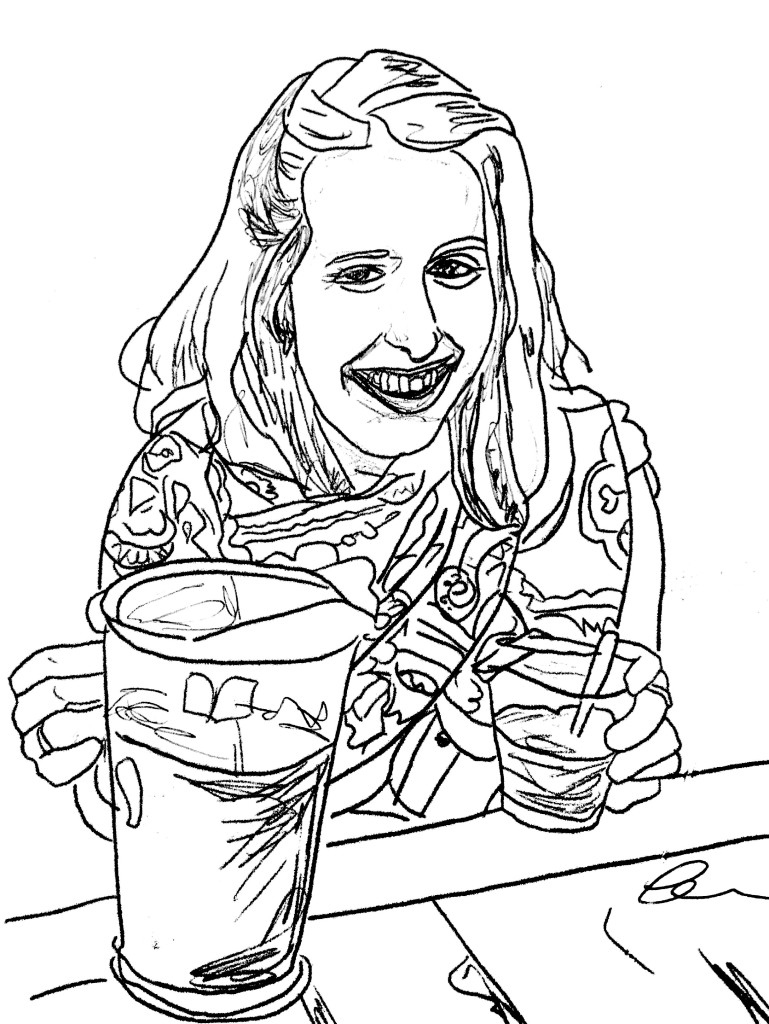 My art is mainly inspired by nature or by places I’ve traveled to or read about. It doesn’t tend to emphasize detail and, when humans are included in the composition, they are usually faceless, depicted as chunky, cubist blocks of colour. People are rarely the main subject of my paintings. And, unlike Frida Kahlo, one of my painting idols, I have never entered the world of portrait painting, much less self-portrait painting.
My art is mainly inspired by nature or by places I’ve traveled to or read about. It doesn’t tend to emphasize detail and, when humans are included in the composition, they are usually faceless, depicted as chunky, cubist blocks of colour. People are rarely the main subject of my paintings. And, unlike Frida Kahlo, one of my painting idols, I have never entered the world of portrait painting, much less self-portrait painting.
When painting the facial features of other people, one must pay obsessive attention to detail. This is a skill I don’t have when it comes to painting. It’s almost as if, through painting, I can leave the burden of fussing over details behind to pursue a sense of therapeutic self-pleasing aesthetic that focuses on colour and shape, rather than the fine lines and subtleties. I tend to spend far too much time obsessing over details in real life and so I view painting as an escape from that. When painting life-like portraits, however, such an escape is impossible.
But, like Picasso, I want to become an artist-of-all-trades or, at the very least, claim experience with different subject matter. So, besides feeling that the experience would be tedious and slightly narcissistic, I decided to attempt a self-portrait.
The thing about self-portraits is that we know our own faces very well. From my teenage years through young adulthood I remember countless hours spent obsessing over my reflection: squeezing zits, plucking eyebrows, willing my nose to shrink and wondering what made my face less poetic than that of a famous actress or singer, almost like there was a secret beauty ingredient I might have been born lacking. Painting a self-portrait demands an attention to detail unlike any other mirror flirtation ever performed. From the exact shape of the mouth, to the way the cheeks are outlined, I found myself staring at parts of my reflection that I had never experienced before.
Because I’m not experienced in portrait-painting, the painting started out rough. My oil-painted face was taking on a deformed, misshapen quality, it didn’t look like me, and I found myself criticizing the painting, judging it, and then my own abilities. I then realized, painfully, that this was akin to the way I would criticize my real-life reflection. After a while, though, I found myself comforted by my outline’s familiarity and that comfort turned into a sort of visual satisfaction. This was my face: the window to the person I am who lies beneath and the signature that accompanies everything I say or do in this life. I began to make peace.
Creating art allows us lots of space for reflection. Perhaps that’s why it’s so therapeutic. As I mix colours and apply paint to canvas my mind relaxes and wanders, uninhibited, into new terrain. I find that while painting it helps to have a notebook handy because one artistic pursuit nurtures another and I find myself inspired to not only paint, but write as well. On this portrait-painting day in particular, I felt a relaxing space open up for reflection on who I am now, at 26 years of age. My reflection may have changed some, but behind the wide gaze, I could still see the smirk of that 9-year old, in the Universal Studios sweatshirt, who was imaginative, idealistic and shit-disturbing, all at once. I wonder if this 9-year-old knew that in a few years’ time she would be studying something called naturopathic medicine.
This summer has been dedicated to reviewing basic medical sciences for NPLEX and working as an English as a Second Language (ESL) teacher in Toronto. I haven’t made much time for long contemplative walks, reading literature, laying on the grass, socializing or, most of all, painting or drawing. The way I structure my day is a reflection of my disbalance, not my actual interests and priorities and, as I paint, my evolving painted self stares back at me from it’s canvas home and asks me, “is this what you wanted?”
I’m not sure. But portrait painting shows me that there is a link between borderline narcissism and self-contemplation. Maybe that’s why it’s called self-reflection.
by Dr. Talia Marcheggiani, ND | Jul 30, 2012 | Balance, Book, Book Review, Creativity, Education, Emotions, Finding yourself, Ideal You, Mental Health, Philosophy, Psychology, Self-esteem, Self-reflection, Writing
I have a confession to make. Sometimes when I see someone I know in a public place, usually at the end of a long day, I am often guilty of lowering my head and pretending I don’t notice them, regardless of how good a hair day I’ve been having.
(more…)
















